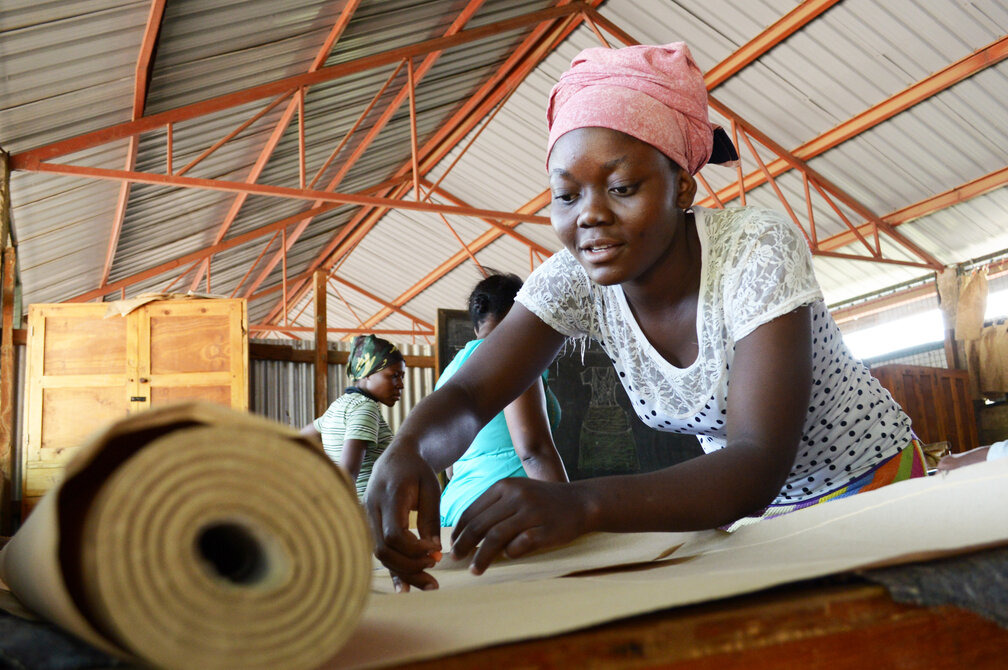With COVID Adding a New Layer of Disruption, Who’s Helping Refugees in East Africa?
/A vocational training centre in Kakuma refugee camp in Kenya, pre-COVID. Adriana Mahdalova/shutterstock
East Africa hosts one of the largest populations of refugees in the world, roughly 3 million people searching for peace, safety and political stability.
The flow of refugees came to a halt last March when countries including Kenya, Uganda and Ethiopia closed their borders to help stop the spread of COVID-19. The pandemic has prompted a long list of additional threats and challenges for the displaced, including resources and services that were spread even thinner than usual, and fewer available paths to employment.
Amid these new disruptions, a partnership between the IKEA Foundation and the International Rescue Committee (IRC) recently launched a new project to stabilize the lives and livelihoods of refugees and local residents in Nairobi, Kenya, and Kampala, Uganda.
Two programs
Re:Build, short for Refugees in East Africa: Boosting Urban Innovations for Livelihoods Development, is a large-scale initiative that expects to help nearly 20,000 refugees and locals find employment and grow businesses.
The IKEA Foundation’s five-year, total €30 million commitment—roughly $36 million—will fund programming, an influencing agenda and research to boost effectiveness. The program uses tactics like apprenticeships, skills training and certification, and eases access to financial support through grants and financial services.
The new effort builds on the partners’ first project, BILLY, which dedicated €5 million ($6 million) in building incomes and opportunities for young Kenyans living in Nairobi through similar skills training and support. Barri Shorey, senior director of economic recovery and development for the IRC, says that replicating the same interventions in Kampala will help the partners understand the potential for scalability, as they gauge whether “similar impact can be achieved in a different context.” At the same time, the expansion allows the exploration of additional interventions for purposes of comparison.
Shorey says the research will be of great value, as “very few rigorous research studies have been conducted with a specific focus on refugee livelihoods, and even fewer with a focus on urban refugees.”
Two countries
Nearly half of East African refugees land in Uganda—and for good reason. While other countries marginalize refugee populations, Uganda follows a 2017 response framework developed by the United Nations that gives new arrivals a warmer welcome than they’ll find elsewhere, and a higher degree of social agency.
The “whole of society” response led by the government, and facilitated by the U.N. Refugee Agency (UNHRC), allows newcomers from places like South Sudan, the Democratic Republic of Congo (DRC) and Burundi to move about freely, tap government services, and enter pathways to employment. In June, Uganda stood alone, temporarily reopening its borders to nearly 10,000 people who were trapped between countries after fleeing ethnic clashes in the DRC.
Kenya is party to a number of international conventions that sustain the rights of refugees, but segregates stateless newcomers. Of the nearly a half-million refugees and asylum seekers it currently hosts, almost 400,000 reside in Dadaab and Kakuma camps and the Kalobeyei settlement. Policies are more progressive in urban settings, primarily in Nairobi, where a minority live legally with integrated access to education, business opportunities, and services.
In both settings, IKEA’s support comes at a critical juncture, as coronavirus stressors stretch already limited basic supports and increase the risks of marginalization. Specific to employment, closed businesses meant job disruptions. Specific to the IRC, Barri Shorey says that meant adapting programming, and even suspending services in urban areas where closed borders disrupted trade and sourcing, like the tailoring materials from the Congo used by refugees from Kampala.
The biggest threats
In the past decade, the IKEA Foundation has evolved as a leading funder seeking to help families enjoy better everyday lives, with investments exceeding €175 million ($210 million) across 45 countries in 2018. More recently, it emerged from time spent “learning, growing and exploring,” to take on the two issues it considers to be the biggest threats to children’s futures: poverty and climate change.
Its current work is grounded in the belief that well-paying jobs are the best path out of poverty, and that they’re best created within the context of adapting to climate change. To draw a clearer line between refugees and families: Nearly 80% of Uganda’s estimated 1.4 million refugees are women and children.
In 2019, the foundation committed €100 million ($120 million) through 2024 to programs that help refugees and host communities create self-reliance through employment and entrepreneurship, particularly within agricultural value chains and renewable energy.
IKEA Foundation’s two programs in partnership with IRC are part of the foundation’s Refugee Livelihoods Initiative (RLI), a program of its Special Initiatives portfolio. Grants within that discipline generate evidence on pathways to sustainable livelihoods for refugees and host communities in urban and rural settings.
When announcing Re:Build, Per Heggenes, CEO of the IKEA Foundation, reinforced the idea of zeroing in on jobs, saying the foundation remains “committed to helping refugees and local residents secure livelihood opportunities that enable them to earn a decent income, support their families and lead dignified lives.”









